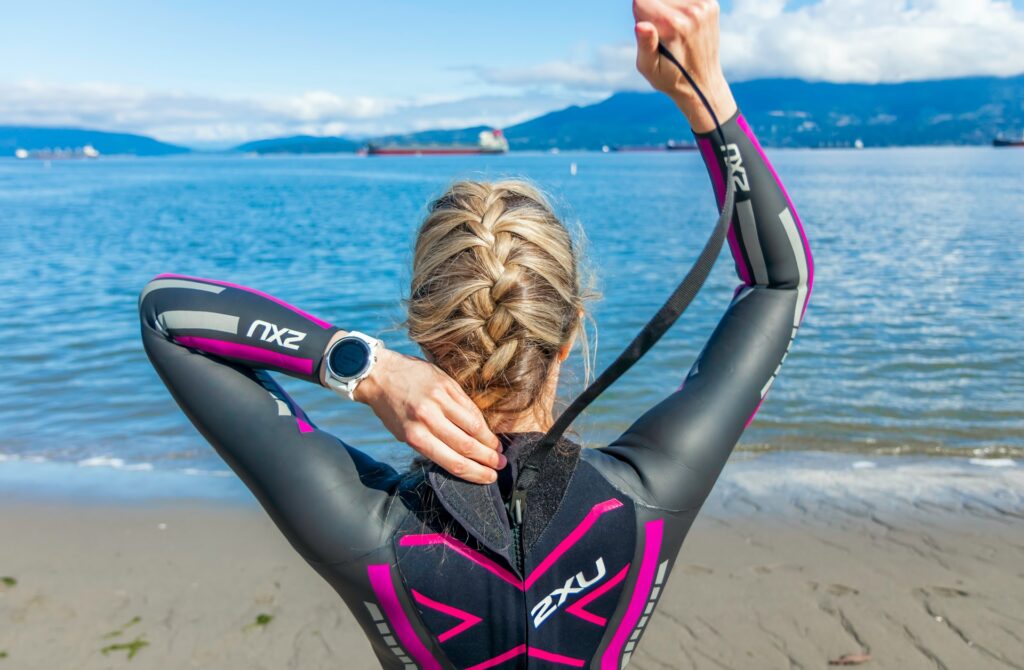A steamer wetsuit is a neoprene underwater garment used for thermal protection when the user is wet. Nitrogen gas is contained inside the neoprene in the form of very small bubbles. These bubbles reduce the amount of heat that is transferred, which means that the heat that your body generates is kept inside the nitrogen bubbles rather than being absorbed by the water.
Steamer wetsuit fitting
How well a steamer wetsuit fits you will determine how well it works for you. If it’s too flimsy, water will accumulate within. The water will then warm up as a result of your body heat rather than being trapped within the neoprene keeping you warm. The thermal element of the suit is hampered since it takes a lot longer for the water to warm up. Furthermore, the slack wrist, ankle, and neck seals of baggy wetsuits enable heat to escape.
A steamer wetsuit, on the other hand, shouldn’t be overly tight. Breathing issues may result from this, which is hazardous in circumstances when life depends on vigorous movement like swimming. An ideal wetsuit will comfortably contact as much of your skin as possible. You must keep your mobility since foamed neoprene is stretchy. Many individuals may buy and use well-fitting over-the-counter wetsuits thanks to neoprene’s flexibility.
Steamer wetsuit thickness
Steamer wetsuits may be made with a variety of thicknesses, allowing them to be used for a wide range of activities. In contrast to a standard bathing suit, dive suits protect against a variety of potential dangers, including sunburn, coral, and jellyfish. This makes dive suits very important. It is possible to buy wetsuits that are thicker to provide additional insulation but, the user will feel reduced mobility as the thickness of the wetsuit increases.
The thickness of steamer wetsuits is often expressed as a combination of two values. A wetsuit with a torso thickness of 3 millimeters and limb thicknesses of 2 millimeters, for instance, will be known as 3/2mm in the industry. Some wetsuits feature extra insulation in other regions, like the lower back, for example.
When to wear a steamer wetsuit?
Steamer wetsuits are used in numerous water sports. They are ideal for water sports, particularly those played in cold environments. Especially in cold air or cold water, surfing is one of the most popular water sports where athletes use a wetsuit.
Your usage of a steamer wetsuit will be influenced by certain circumstances and preferences. A full-body, bulkier wetsuit will work for you if you have a low threshold for the cold. If your tolerance is greater, however, a thinner suit with less covering would be the best option. The sort of wetsuit to wear is also influenced by the ambient air and temperature. On a hot day, you’ll need less protection if you’re in warmer water than you would in the early morning before dawn.
Types of steamer wetsuits
- Full wetsuit
Full wetsuit, or Long Arm Steamer, completes the range of steamer wetsuits. Depending on the quantity of warmth needed, this wetsuit is available in a variety of wetsuit thicknesses for cold-water surfers. A 3mm/2mm wetsuit is what you would choose for lower temps. A 4 mm/5 mm/4 mm/ wetsuit is required for extremely cold conditions to maximize your time underwater. Some even have connected hoods. You can stay in the water longer than all of your friends if you wear a 6mm full suit with a wetsuit glove, connected hood, and rash guard.
- Short John wetsuits
Our arms are left bare because the Short John steamer wetsuits don’t have sleeves. You are now covered from your chest down to your legs, which will help keep your core warm. Ideal for warding off the morning cold during early patrol surf sessions without turning into a sauna as the sun rises higher in the sky.
- Long John wetsuits
The Long John provides covering for the whole body except for the arms, making it ideal for outdoor activities. You can paddle with ease because of the lack of resistance from the neoprene when you thrash your arms about. In settings in which the air temperature is warm but the water temperature is a touch on the cold side, the Long John steamer wetsuit is an excellent choice.
- Wetsuit vest
The wind chill may be warded off with the help of the vest’s neoprene covering, which can be found on the front and back. On a hot summer day, the steamer wetsuit vest will make you feel much more at ease than you would otherwise. The picture on the left illustrates how similar it is to what may be called a singlet, tank top, or vest, depending on where you are from. In most cases, the thickness of the vest is either 2 or 3 millimeters. It is not required that you wear anything on your lower half.



